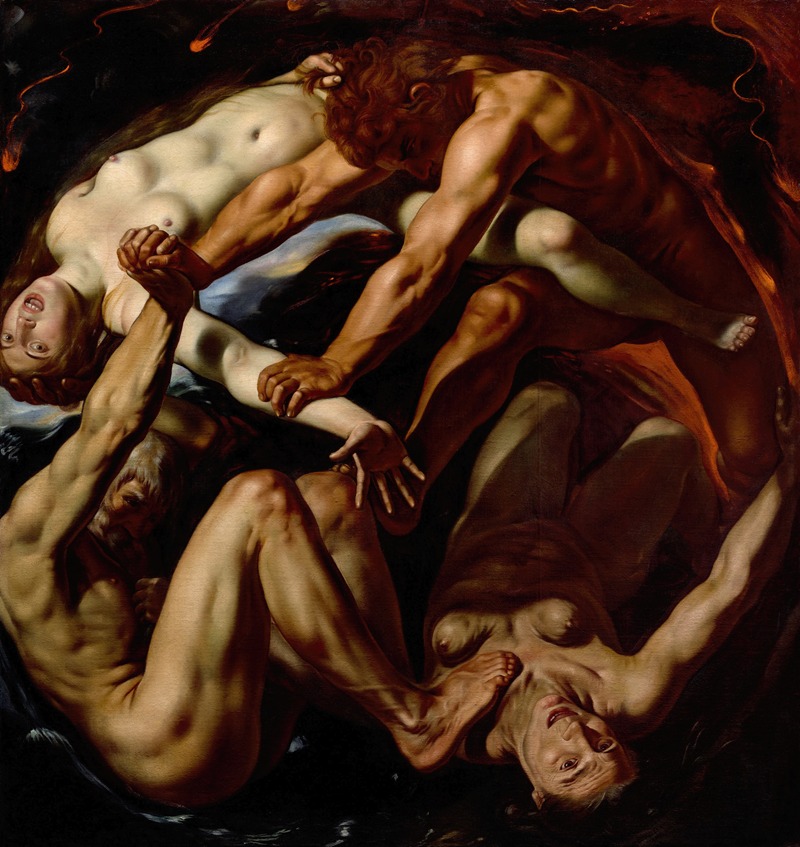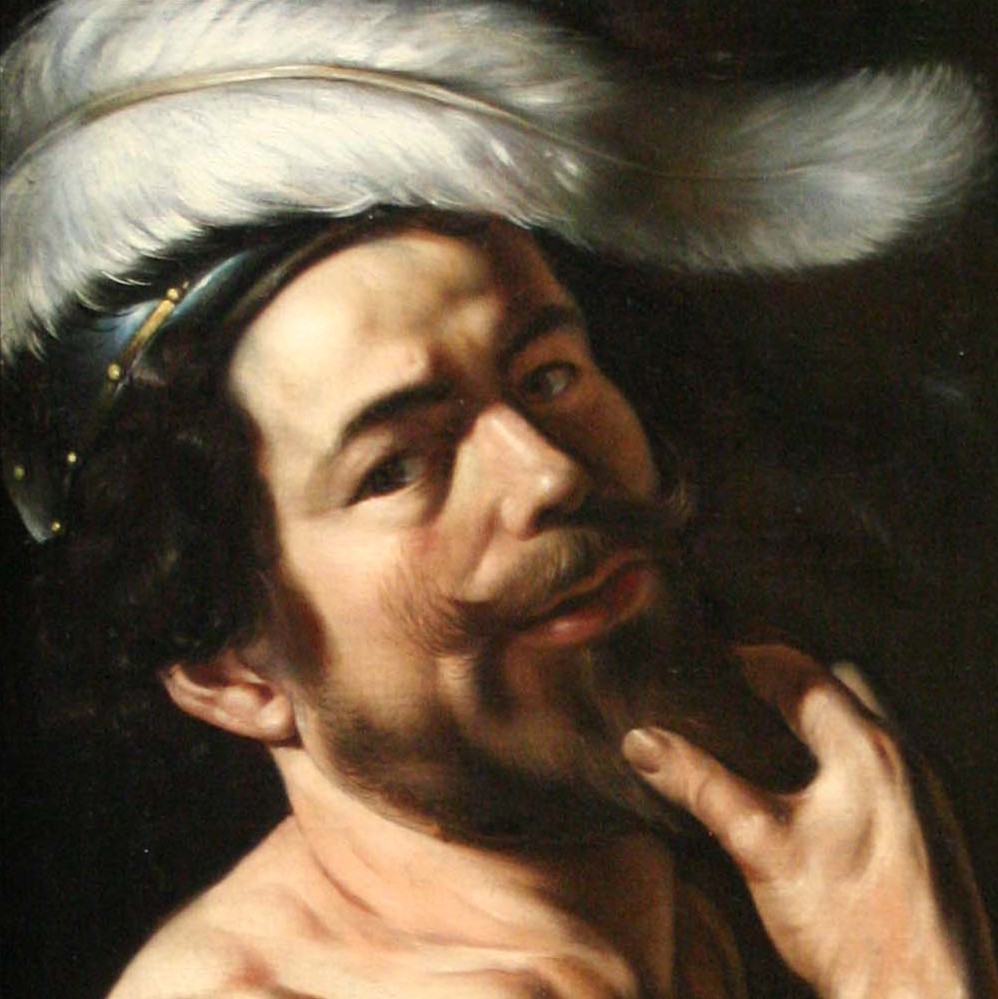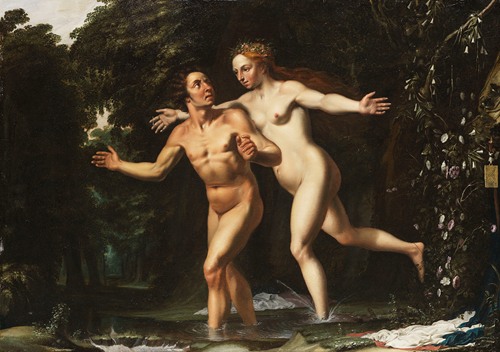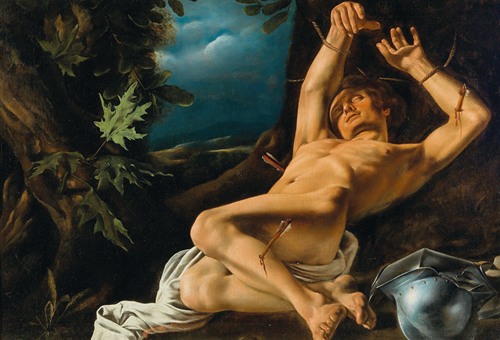

Louis Finson, Lodewijk Finson or Ludovicus Finsonius was a Flemish painter, draughtsman, copyist and art dealer. He painted portraits, religious compositions, allegorical paintings and genre scenes. Moving to Italy early in his career, he became one of the first Flemish followers of Caravaggio whom he knew personally in Naples. He produced a number of copies after works by Caravaggio. He worked for a number of years in various cities in France where he created altarpieces and portraits. He is known for being the co-owner together with his fellow Flemish painter and business partner Abraham Vinck of two paintings by Caravaggio. Louis Finson played a major role in the Northern Caravaggesque movement through his own works as well as his role as an art dealer.
Finson was born in Bruges, the son of Jacob Finson and Maycken Bart. His father was a painter who had been in Bruges a pupil of Ambrosius Benson, an Italian painter active in Bruges who was part of the Northern Renaissance, and Rogier de Paeuw. Jacob Finson was originally documented as a cloth-painter (cleerscryver) or house painter (huusscruyver), an artisan who painted textiles and wall paper, but also statues. He was later registered as a regular painter. He held several functions at the Bruges guild and became its dean in the guild year 1583–1584. Louis Finson had two or three older brothers and a sister and was likely the youngest child of the family.
After the death of Maycken Bart in 1580, his father married Jozyne vande Voorde. In the second half of the 16th century the Habsburg Netherlands were going through a period of violent religious conflict which had a heavy toll on the civil population. This likely caused the Finson family to leave Bruges in 1585 to settle in the town of Veere, on the island of Walcheren in the province of Zeeland. At that time Veere was an important trading and military port of the Dutch Republic. Jacob Finson remained in Veere until his death in April 1608. His son Arnoud was registered as a painter in Veere and died there before 1617.
There are no records on the movements of Louis Finson between 1585 and 1604. He likely moved with the rest of family to Veere in 1585. At that time Louis was still young and he likely remained with his family until the late 1590s. Finson likely received his initial artistic training from his father. It is possible that he continued his studies in another town in the Dutch Republic, such as Amsterdam.
He traveled to Italy where he was first recorded in Naples in March 1605 on the receipt of a payment for a painting. His initial commissions included portraits. In Naples he befriended fellow Flemish painter and art dealer, Abraham Vinck, with whom he shared for some time a workshop and also a residence. Vinck had been in Naples since about 1598 and left the city around 1609 for Amsterdam. His relationship with Vinck likely enabled Finson to quickly find patrons in the city. The two artists were also business partners who operated an art dealing and copying business.
It is likely that Finson and Vinck offered Caravaggio refuge when he arrived in Naples after fleeing Rome following his killing of a rival painter in a brawl. They may have arranged for him a place to work and connected him with patrons in Naples. Finson obtained commissions in Naples. On 24 August 1612 Finson received a final payment for an Annunciation made for the church of Saint Thomas of Aquino in Naples (now in the Museo di Capodimonte). It is to date Finson's only surviving commission for an altarpiece dating from his stay in Naples. He may not have been very successful with his paintings in Naples. This may be one of the reasons why he decided to leave the city.
Finson first spent a brief time in Rome in 1613. He left Italy around 1613 and may have traveled via Spain. He arrived in France no later than 27 February 1613 when he was recorded in Marseille. He was accompanied by the painter Martin Hermann Faber who may have been his pupil. Finson and Faber each painted around this time a self-portrait which they executed in a matching Caravaggesque style. The French scientist and intellectual Nicolas-Claude Fabri de Peiresc, who was also a great friend of Rubens, became acquainted with Finson and was an admirer of his work. Peiresc was one of the first admirers and champions of Caravaggio in France after discovering Caravaggio's works in the Contarelli chapel in Rome in 1600 at the age of 20. He gathered around him what has been called a 'caravaggesque workshop of Southern France' which included artists like Louis Finson, Martin Hermann Faber, Trophime Bigot and others. He arranged a number of commissions for Finson, including for history paintings and portraits. As a result, Finson gained a strong reputation in the Provence. He was able to sell some of the unsold paintings from Naples to French patrons. He also painted a portrait of Nicolas Claude Fabri de Peyresc. Peiresc was an avid art collector and relied on Finson's contacts in Italy to acquire two works of Caravaggio from the Pasqualini family of Rome. During his stay in France Finson was together with his partner Martin Hermann Faber in the possession of nine original works of Caravaggio.
Finson worked in various cities in France where he painted religious works, altarpieces and portraits. He created works in Marseille (1613-1616), Aix-en-Provence (1613-1614), Arles (March 1614) and Montpellier (1614). After falling ill he was held up in Bordeaux in October and November 1614. In 1615, he made paintings in Poitiers, and then in Paris.
He left Paris on 10 July 1615 and arrived in Amsterdam in 1616 or later. Here he linked up again with Abraham Vinck who was his landlord in the period 1616-1617 for a residence on the Oudezijds Voorburgwal in Amsterdam. He fell ill again and made his will on 19 September 1617. In the will he left to Vinck his share in the two Caravaggio paintings which they had acquired from Caravaggio during their stay in Naples. He died soon afterwards and was buried on 1 October 1617 in the Oude Kerk in Amsterdam. His estate included a third painting by Caravaggio of the Martyrdom of Saint Andrew (private collection).

